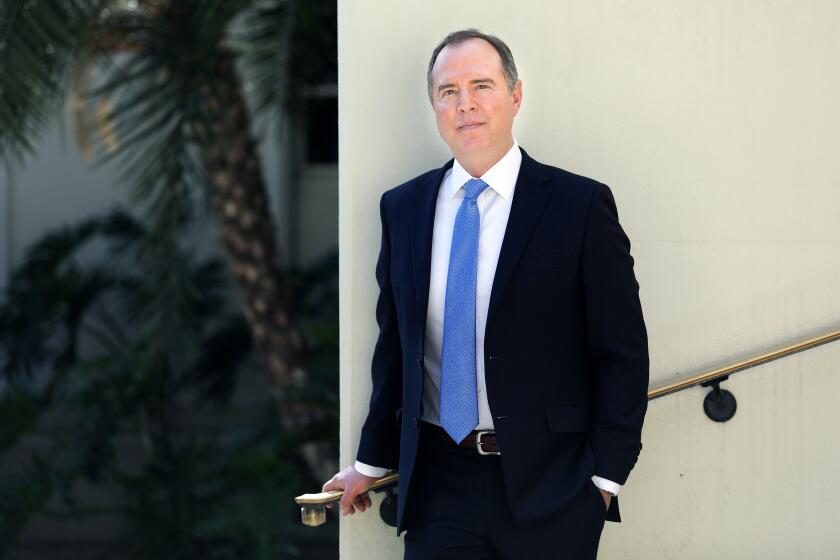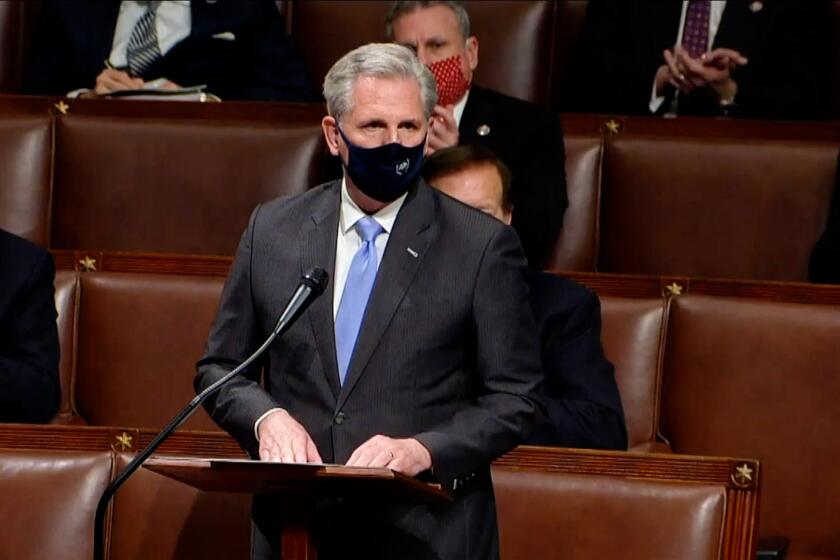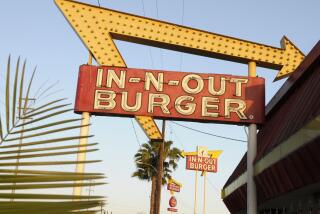Column: Does Sarah Palin, infected with COVID-19, put New York diners in danger? You betcha!
- Share via
What is the matter with Sarah Palin?
After COVID-19 vaccines became available, the former Alaska governor and tea party favorite announced she’d get one “over my dead body.”
On Saturday, two days before jury selection was to begin in her federal defamation lawsuit against the New York Times, she was photographed dining indoors at Elio’s, an Italian restaurant on Manhattan’s Upper West Side, a blatant violation of New York’s mandate, which requires indoor diners to show proof of vaccination.
Little did her fellow diners suspect they might be getting a side of COVID with their carbonara.
On Monday, Judge Jed Rakoff announced he would postpone the court proceedings to Feb. 3 because Palin had tested positive, three times, for the coronavirus. “She is, of course, not vaccinated,” said the judge.
Of course not.
So did Palin quarantine responsibly for five days, per the Centers for Disease Control and Prevention’s guidelines?
Or did she go rogue?
Does a moose poop in the tundra?
On Tuesday, she was spotted dining outdoors at Campagnola, another old-school Italian place on the Upper East Side.
Wednesday, she returned to Elio’s, and this time sat with companions in a heated outdoor area.
New York City Mayor Eric Adams asked that any New Yorkers who had come into contact with Palin get tested for the coronavirus.
“By repeatedly flouting CDC guidelines, Ms. Palin has shown a complete disregard for the health and safety of small-business workers and her fellow patrons,” said the mayor’s spokesperson.
She could have ordered takeout, of course. Except on Planet Palin, if you haven’t noticed, attention is oxygen.
She hasn’t generated this many headlines since she dressed up as a giant pink teddy bear and performed Sir-Mix-a-Lot’s “Baby Got Back” on “The Masked Singer,” footage Palin made clear in a court document that she does not want the jury to see because it might cause “unfair prejudice and confusion.”
In his first book, ‘Midnight in Washington,’ the lead prosecutor in Trump’s first impeachment trial relives our shared national trauma.
This, by the way, is her second bout of COVID. The first time around, last March, she urged people to mask up and use common sense “to avoid spreading this and every other virus out there.”
Perhaps New Yorkers are not entitled to the same level of respect that Palin has for her fellow Alaskans.
I really hope the judge addresses her cavalier behavior when the trial gets underway.
Barring a pretrial settlement, a federal jury will determine whether she was defamed in 2017, when the New York Times ran an editorial bemoaning what it described as a link between inflammatory political rhetoric and gun violence. The piece wrongly drew a line between the January 2011 mass shooting that wounded then-U.S. Rep. Gabrielle Giffords (D-Ariz.) and a map, circulated by Palin’s political action committee, that had target-like crosshairs on congressional districts the GOP wanted to win back from Democrats. Giffords’ Arizona district was among them.
The House minority leader needs to tell Americans what he knew, when he knew it and exactly what then-President Trump told him on Jan. 6.
Immediately after the shooting, there was a lot of overheated partisan blather about the connection between Palin’s map and the mayhem in Arizona. In her lawsuit, Palin claims that while such “rank speculation was quickly dispelled,” it led to “the end of her position as a Fox News political commentator, influenced her decision not to run for President of the United States, and tainted her personal and professional image.”
I should note that her contract with Fox ended in 2015, and her flirtation with a presidential run in 2012 was just that. An editorial that ran in 2017 would seem to have no bearing on either outcome.
But I digress.
Obviously, it was wrong of the Times to connect the two events. The gunman, who killed six people and wounded 13 including Giffords, had been obsessed with the congresswoman for years and was described by friends as not particularly engaged in politics.
The Times quickly corrected its editorial — twice — but Palin wants a full retraction.
In her lawsuit, she claims the editorial caused “damage to her reputation, humiliation, embarrassment, mental suffering, shame and emotional distress.”
Was it the same kind of distress, one wonders, that former President Obama may have felt when she accused him of “palling around with terrorists” in 2008 when she was the running mate of Republican presidential nominee John McCain?
Or when she accused Obama of wanting to create a “death panel” as part of his landmark healthcare reform law?
To prevail, Palin will have to meet the very high bar that was established by the Supreme Court in the landmark 1964 case New York Times vs. Sullivan.
Public figures who allege defamation, said the court, must show that a report was wrong and harmful to their reputation. But they also have to prove that a publication acted with “actual malice,” meaning it knowingly published a falsehood or displayed a reckless disregard for the truth. Newspapers, in other words, are allowed to make honest mistakes.
Palin is about as public a figure as it gets; in her lawsuit, she notes that she was named one of Time magazine’s “100 Most Influential People in the World” and was also listed as one of the Smithsonian Institute’s “100 Most Significant Americans of All Time.”
Some free speech experts fret that if the case makes it to the U.S. Supreme Court, the conservative supermajority may weaken the tough standard that was established in Sullivan. In reporting about Palin’s lawsuit, the New York Times pointed out last week that Justices Clarence Thomas and Neil M. Gorsuch have both expressed antipathy toward the Sullivan standard.
I hope Palin loses her case. Not just because the Sullivan standard is a bedrock of my profession, but because I don’t really believe she has been seriously damaged by one wrongheaded editorial.
More to Read
A cure for the common opinion
Get thought-provoking perspectives with our weekly newsletter.
You may occasionally receive promotional content from the Los Angeles Times.














